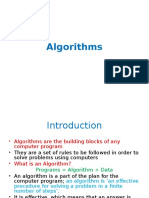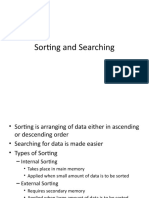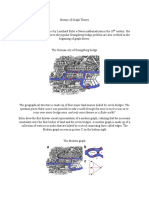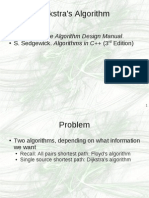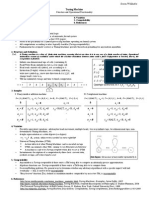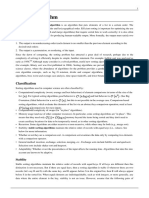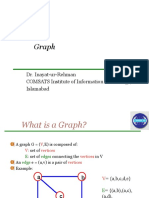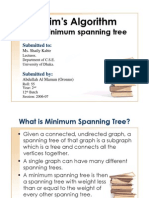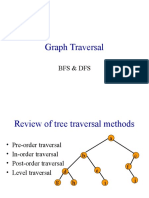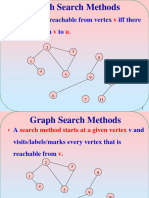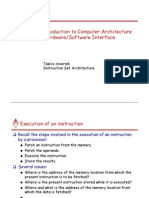100% found this document useful (1 vote)
144 views57 pagesGraph Traversal: Bfs & Dfs
This document discusses graph traversal methods like breadth-first search (BFS) and depth-first search (DFS). It provides examples of how BFS works by visiting the neighboring nodes of a starting node and adding them to a queue in levels. The key properties of BFS are that it visits all nodes reachable from the starting node and does so in an order that progresses outwards by levels. BFS can be used to find the shortest path between nodes, check if a graph is connected, and for other graph problems.
Uploaded by
achaparala4499Copyright
© © All Rights Reserved
We take content rights seriously. If you suspect this is your content, claim it here.
Available Formats
Download as PPTX, PDF, TXT or read online on Scribd
100% found this document useful (1 vote)
144 views57 pagesGraph Traversal: Bfs & Dfs
This document discusses graph traversal methods like breadth-first search (BFS) and depth-first search (DFS). It provides examples of how BFS works by visiting the neighboring nodes of a starting node and adding them to a queue in levels. The key properties of BFS are that it visits all nodes reachable from the starting node and does so in an order that progresses outwards by levels. BFS can be used to find the shortest path between nodes, check if a graph is connected, and for other graph problems.
Uploaded by
achaparala4499Copyright
© © All Rights Reserved
We take content rights seriously. If you suspect this is your content, claim it here.
Available Formats
Download as PPTX, PDF, TXT or read online on Scribd
/ 57


